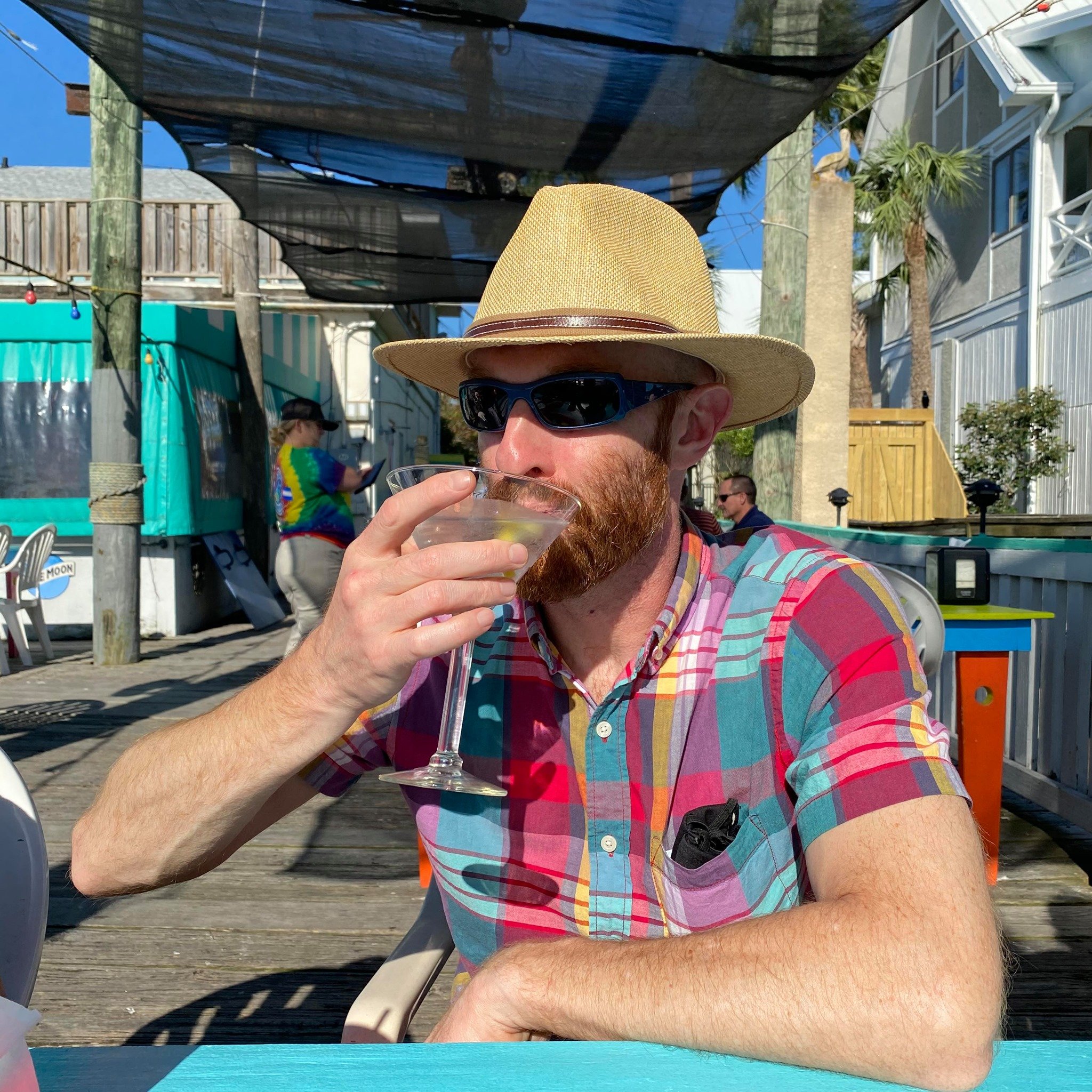Painting After Art Is Dead
On this episode we interview artist Sterling Bowen where we talk about his geometric intuitive painting style, the mindset of “painting after art is dead”, and his method for balancing a day job while making artwork that will leave behind a purposeful legacy.
Sterling Bowen | Raleigh, NC
Artist Biography:
Sterling studied art at UNCC as an undergrad and was also a graduate fellow in painting at the University of Houston. He returned to painting after a 15 year hiatus in 2018 and maintains a blog about his painting and the artists he finds interesting (www.sterlingbowen.com). During the day, Sterling works in clean energy. He is a father of two who lives in Raleigh with his spouse, where he enjoys watching and playing basketball, the local beer scene and working with a number of civic groups to improve quality of life in the city where he has chosen to live his life.
Artist Statement:
When I first started using a system interconnected and discordant isometric cubes and making paintings derived from them, I was searching out a frenetic “all over” energy that seemed authentic for me and my space/place in time- an intensity that can’t be ignored, through strategies that prohibit the eye from resting and settling.
The cube assemblages- which are not attached permanently to each other or the wall- foreground gravity and light source in a way the paintings can not. I treat the cubes as proxies for brushstrokes themselves, as I rather spontaneously (like gestural, abstract painting) assemble them into temporary compositions that are never repeated. Similar to the formalist constraints I place on my paintings through a drawing system, this body of work is tied together by the limitations of stacking and a limited band of chroma.
The intent of this part of my practice is to foreground experience, for myself and the audience. l also introduce the element of chance into how the cubes are made- their final visual character is not entirely known until the hodge-podge of glued wood scraps are “squared up” on a miter saw. I further respond to these discoveries as I make intuitive choices about chroma for their surfaces.
The conceptual basis for the cube is its representation of early, Modernist ideas of nonrepresentational painting, pointing to one of several ideas- here, “concerned with its own formal qualities.” It can certainly have other meanings, and the reference to Modernism is not an acceptance or denial of this epoch’s problematic histories. Here, “cube” is just shorthand.
Stay Connected With Sterling:
Website: www.sterlingbowen.com
Instagram: @sterlingbowen
Podcast Music By Corey Claxton:
Website: https://www.coreyclaxton.com/
Instagram: @thecoreyclaxton
Spotify: https://spoti.fi/3gMzkkK
Subscribe to the Art Studio Insights Podcast: Apple | Spotify | Google | Youtube
Sign-up for our studio newsletters at: JaclynSanders.com | Ameighart.com
Connect with us on Instagram: @JSandersStudio | @ameighart
To learn more about the podcast, click here.






